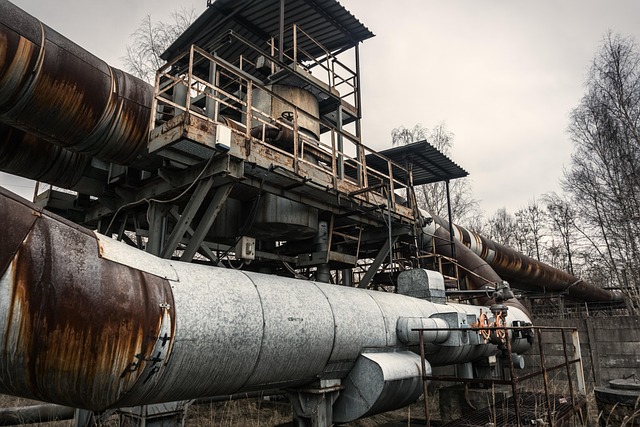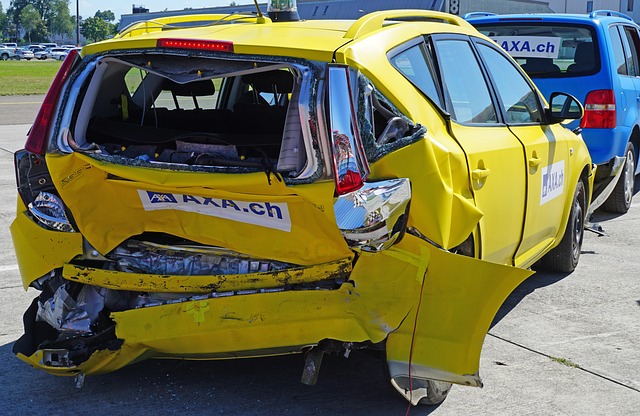Lowering Work Injury Settlement: Avoid Common Documentation Mistakes
TL;DR: Inadequate or missing medical documentation can severely undermine work injury settlements, l…….
In today’s fast-paced work environment, the well-being of employees is a paramount concern for organizations worldwide. One critical aspect that often goes hand in hand with ensuring workplace safety is managing and settling work-related injuries. ‘Work injury settlement’ refers to the process and outcome of compensating workers who sustain injuries or illnesses during their employment. This complex and sensitive issue involves legal, financial, and emotional components, all of which are essential for fostering a fair and supportive recovery environment for affected individuals.
This article aims to delve into the intricate world of work injury settlements, exploring its various facets, global impact, and future potential. By understanding this process, employers, employees, and policymakers can navigate the challenges and create systems that prioritize worker well-being without compromising organizational interests.
Work injury settlement is a legal and financial arrangement made between an employer and an employee who has suffered a work-related injury or illness. It involves several key components:
Compensation: This includes monetary payments to cover medical expenses, lost wages, disability benefits, and other related costs. The amount is typically determined by the severity of the injury and local labor laws.
Medical Care: Employers are often required to provide or facilitate access to medical treatment for injured employees. This can include initial emergency care, ongoing rehabilitation, and specialized treatments.
Disability Benefits: Depending on the jurisdiction, workers may be entitled to temporary or permanent disability benefits if their injuries impact their ability to work. These benefits ensure financial support during recovery.
Rehabilitation and Return-to-Work Programs: Many settlements include plans for employee rehabilitation, helping them regain skills and consider alternative job roles upon return to work.
Legal Compliance: Work injury settlements must adhere to various laws and regulations governing workplace safety, workers’ rights, and compensation.
The concept of compensating workers for on-the-job injuries has evolved over centuries. The modern work injury settlement system can trace its roots back to the Industrial Revolution when labor laws began to take shape. Early industrial societies recognized the need for protection after a series of accidents led to widespread public outcry.
In the 19th and early 20th centuries, many countries implemented workers’ compensation acts, which provided financial security for employees suffering work-related injuries or illnesses. These landmark laws marked a significant shift, moving away from a purely employer-oriented system where injured workers often faced legal repercussions. Today, work injury settlements are an integral part of occupational health and safety, with variations in policies worldwide.
Work injury settlement practices vary across the globe, reflecting diverse cultural, economic, and political systems. Here’s a snapshot of key trends:
North America: The United States and Canada have well-established workers’ compensation systems, with specific regulations for various industries. These countries focus on providing prompt compensation and medical care to injured workers.
Europe: European Union member states adhere to the EU Workers’ Rights Directive, ensuring a consistent level of protection across the bloc. Many European countries offer comprehensive work injury settlement packages, including advanced rehabilitation services.
Asia Pacific: Countries like Australia and New Zealand are known for their robust worker protection laws, while nations such as Japan and South Korea have seen recent improvements in their compensation systems. The Asia Pacific region often faces unique challenges due to a mix of traditional labor practices and rapid industrialization.
Emerging Markets: Brazil, Mexico, and some African nations are working on strengthening their work injury settlement frameworks, with international organizations providing support and expertise.
The economic implications of work injury settlements are far-reaching, affecting both employers and employees. Here’s an overview:
| Economic Aspect | Description |
|---|---|
| Market Costs | Work injuries can significantly impact business operations, leading to increased insurance premiums, legal fees, and direct costs associated with medical care and disability benefits. |
| Productivity Loss | Injured workers may experience reduced productivity during recovery, affecting overall organizational performance. Employers often invest in return-to-work programs to minimize these losses. |
| Workforce Retention | Effective work injury settlement processes can enhance employee morale and loyalty, leading to better retention rates. Happy and supported employees are more likely to stay with a company. |
| Economic Growth | Well-designed compensation systems encourage safe work practices, reducing the overall cost of workplace injuries and contributing to economic growth by minimizing productivity losses. |
| Government Spending | In some countries, public funds support workers’ compensation programs, influencing government budgets and tax policies. |
Technology plays a pivotal role in modernizing work injury settlement processes:
Digital Claims Management: Online platforms streamline the claims process, enabling employees to file reports quickly and providing real-time updates on claim status.
Telemedicine: Remote medical consultations are changing the face of occupational health care, making it easier for injured workers to access specialized treatments, especially in remote areas.
Data Analytics: Advanced analytics help predict and prevent workplace injuries by identifying high-risk sectors and implementing targeted safety measures.
Virtual Reality (VR) Training: VR is used for rehabilitation and return-to-work programs, offering immersive training experiences that enhance skill development.
These technological innovations not only improve the efficiency of settlement processes but also contribute to a culture of proactive workplace safety.
Work injury settlement is governed by a web of policies and regulations tailored to each country’s unique needs and values:
Workers’ Compensation Acts: These are foundational laws that outline employers’ responsibilities and rights in case of work-related injuries or illnesses. Examples include the U.S. Workers’ Compensation Act and Canada’s Workers’ Compensation Board.
Occupational Health and Safety Regulations: These rules specify safety standards, workplace inspections, and reporting requirements to prevent injuries and illnesses. They often complement workers’ compensation laws.
International Agreements: Organizations like the International Labour Organization (ILO) provide guidelines and promote cooperation among nations to enhance worker protection globally.
Industry-Specific Rules: Certain industries, such as construction or mining, have unique risks that necessitate specialized regulations. These rules ensure that employers take appropriate measures to safeguard workers in high-risk sectors.
Despite the significant progress made in work injury settlement systems, several challenges and criticisms persist:
Underreporting: Some injuries, especially minor ones, may go unreported due to fear of legal repercussions or skepticism about compensation. This underreporting can skew data and impact policy formulation.
Complex Claims Processing: The process of filing and settling claims can be intricate and time-consuming, leading to delays in much-needed financial support for injured workers.
Medical Cost Variability: Medical expenses associated with work injuries can vary widely, making it challenging to set uniform compensation rates that are both fair and affordable.
Employer Non-Compliance: Some employers may avoid adhering to safety standards or underpay benefits, exploiting loopholes in the system. Strengthening enforcement mechanisms is crucial.
Strategic Solutions:
Australia boasts one of the most advanced work injury settlement systems globally, with the Workers’ Compensation Act serving as a cornerstone. This system has achieved remarkable success in providing support to injured workers while fostering a culture of workplace safety:
Key Features: The Australian model emphasizes early intervention and return-to-work programs, offering a range of rehabilitation services and financial assistance. It also encourages collaboration between employers, employees, and medical professionals.
Outcomes: The system has led to reduced time off work and faster recovery rates due to prompt access to care and specialized support. Employee satisfaction surveys consistently show high levels of approval for the compensation process.
Lessons Learned: Early intervention and a holistic approach to rehabilitation can significantly improve long-term outcomes for injured workers. Collaboration among stakeholders is essential for system efficiency and fairness.
Japan has implemented a unique and highly effective work injury settlement program, focusing on comprehensive rehabilitation:
Program Description: The Japanese system includes a mandatory rehabilitation period for all work-related injuries, with specialized centers providing physical and mental health support. This program aims to facilitate a successful return to work or alternative career paths.
Impact: The initiative has led to improved employee morale and reduced long-term disability rates. Many employees report that the program helps them maintain their dignity during recovery and provides valuable skills for future endeavors.
Insights: Investing in comprehensive rehabilitation can lead to better overall worker satisfaction and productivity, even after an injury. Customized programs that address physical and psychological needs are essential.
As we look ahead, several trends and areas hold promise for the evolution of work injury settlement:
Artificial Intelligence (AI) Integration: AI can revolutionize claims processing by automating data analysis, reducing delays, and improving accuracy. It can also assist in identifying high-risk tasks for proactive safety measures.
Personalized Medicine: Advancements in medical science will enable more personalized treatment plans for injured workers, potentially speeding up recovery and improving outcomes.
Virtual Reality Training Expansion: VR technology will continue to grow in popularity for rehabilitation and return-to-work programs, offering immersive experiences tailored to individual needs.
Focus on Mental Health: There is a growing recognition of the impact of work-related stress and mental health issues. Future settlement processes may include more comprehensive support for psychological recovery.
Global Collaboration: International organizations will play a more significant role in sharing best practices, fostering cooperation among nations, and advocating for improved worker protection worldwide.
Work injury settlement is a multifaceted issue that demands careful consideration of legal, economic, technological, and social factors. By understanding the intricacies and addressing challenges, organizations, policymakers, and employees can create systems that support injured workers while promoting workplace safety.
The future holds immense potential for innovation in this domain, with technology, data analytics, and a growing emphasis on mental health playing pivotal roles. As global awareness of work-related injuries continues to rise, we can anticipate more robust and equitable settlement practices worldwide.
Q: What happens if an employer refuses to provide compensation for a work-related injury?
A: If an employer refuses to compensate an injured employee, the employee can file a claim through their local labor authority or legal channels. Each country has different mechanisms for resolving such disputes, often involving mediation or arbitration.
Q: Are there any limitations on the types of injuries that qualify for work injury compensation?
A: The scope of covered injuries varies by jurisdiction. Generally, most accidents and illnesses related to workplace activities are eligible, but specific conditions may be excluded, such as pre-existing diseases unless they are aggravated by work.
Q: How can technology improve the work injury settlement process?
A: Technology streamlines claims processing, enhances data analysis for risk management, enables remote medical consultations, and provides immersive rehabilitation tools, ultimately improving efficiency and employee support.
Q: What role does public policy play in work injury settlements?
A: Public policy sets the framework for workers’ compensation systems, establishing legal obligations, benefits, and rights. It guides the development of supportive regulations, ensuring fair practices across industries.

TL;DR: Inadequate or missing medical documentation can severely undermine work injury settlements, l…….

After a work-related injury, understanding legal rights is crucial. An experienced lawyer can guide…….

Emotional distress from work injuries is a critical aspect of settlement negotiations, often as impa…….

When facing a work injury, employees must decide between a lump sum or structured payments. A lump s…….

A work injury settlement hearing is a crucial process where injured workers present their cases to a…….

The value of a work injury settlement is determined by the severity and lasting impact of physical h…….

A work injury settlement provides legally binding compensation for employees injured on the job, cov…….

Understanding the tax implications of a work injury settlement is crucial for financial relief and c…….